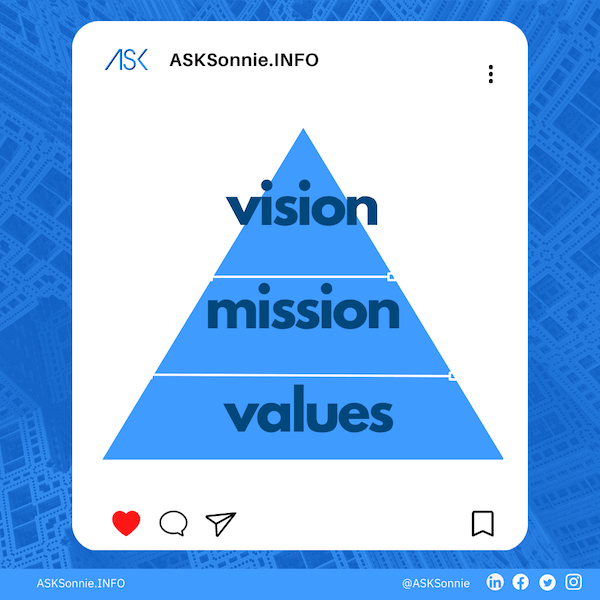“People will follow vision, they won’t follow information” – Tony Morgan
Vision is what captures people’s hearts and minds– in every organization, employees or members chose to stay not only for the money or the culture, but most importantly, because they share and co-own the vision.
In my more than 25 years of corporate experience, I’ve seen people and organizations waste time and resources on activities that don’t provide long-term and concrete value to them.
Individuals have taken jobs they don’t like because the pay is good, and businesses founded on emerging needs have amassed vast fortunes. However, this success is fleeting, and more money does not always equate to mental peace.
Time and resources spent on activities other than operations could yield a meaningful return if there was a clear vision, a sense of purpose, and core values that defined them.

People must recognize their own value, life purpose, and the plan of God for their life. In the absence of this, they will float around or climb the success ladder only to discover that they are on the wrong ladder.
Companies, I believe, cannot exist for more than one generation without a vision. The vision and aspirations of the owner determine the direction of an organization.
Every business has a mission; they just don’t realize it. In a nutshell, a mission is the specific need of society (or the market) that the company is attempting to meet.
The employer brand, on the other hand, is defined by its core values. It is the expected behavior of employees when dealing with customers and all stakeholders.
The VMV Approach
VMV stands for Values-Mission-Vision. VMV is the identity of a person or an organization. It answers the 3 Ws :
- Who- the VALUES answers the who. You are known for your behavior
- What- the MISSION answers the what- your purpose of existence. The need that you are supposed to address. Your set of skills and talents are meant for your purpose of existence, your mission.
- Where- the VISION answers the where. The end in mind, a medium to long term goal, at least for a decade.
Once these are defined, strategic pillars can be derived from the vision, and business goals can be developed and broken down by year.
Each department’s plan and activities are thus synergized, and resources are maximized. OKRS, KPIs, and KRAs can be developed from there, and these will be included as factors in an employee performance appraisal.

Others believe the vision is the foundation, but I believe the core values are. While the vision and, on rare occasions, the mission could change, the core values will not.
The vision serves as a goal, and the core values define the ground rules. The rules will not be changed to reach the objective; rather, the strategies will change to align with the values and achieve the goals
Strategic and business plan is anchored on vision, CSR on mission, organization culture and employer brand is both on mission and core values. Pretty much everything like total rewards, competency framework, guidelines and policies is an offshoot of the company’s VMV,
Thus, developing one and aligning VMV to business operations and organization interventions is a value adding endeavor.





